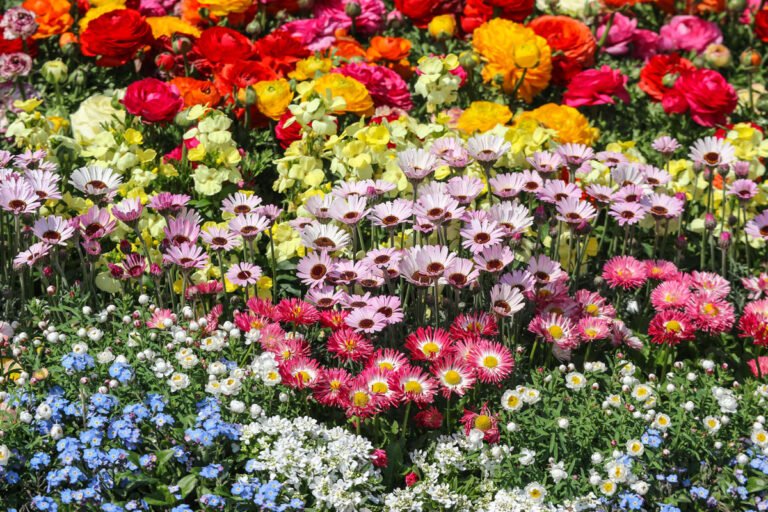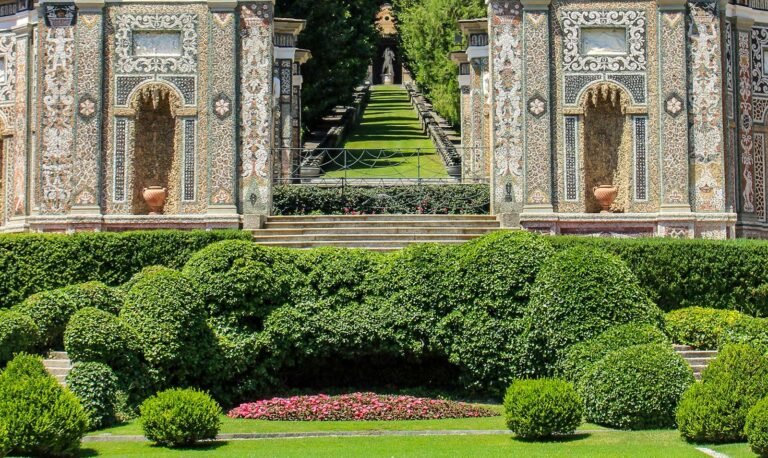Thinking about parks, gardens and landscapes, a series of images flow through the mind, among these how can we forget the perspective views of New York’s Central Park in the Manhattan district, the first public landscape park in the United States with an extension of about 340 hectares, devised not as an area detached from the surrounding neighborhoods but rather as integral part of them, a green lung within one of the main American cities? Before starting a a virtual journey inside the park, let’s proceed with subsequent steps to learn more about its origins.
A bit of history
In the 19th century, the main supporters of the creation of the park, mostly represented by the rich merchants and landowners of the time, were fascinated by the English parks and pushed for the creation of a public green area in New York that would offer their families an attractive environment for carriage rides as well as providing working-class New Yorkers with a healthy weekend entertainment option, until in 1853 the expropriation of over 600 acres of land in downtown Manhattan was authorized.
In 1857, the local Commission announced the first landscape design competition, selecting the “Greensward Project” presented by Frederick Law Olmsted and Calvert Vaux, the design embraced a new concept based on landscape architecture techniques, creating a plan that would preserve and enhance the natural characteristics of the land to provide expansive pastoral landscapes and wooded areas for citizens with flat meadows, gentle slopes, shady valleys and steep rocky slopes. The designers wanted Central Park to become a democratic space where people of all backgrounds and social statuses could experience a rural environment, an escape from chaotic urban life. Construction began in 1858 with intense land modeling works, the building of a water recovery system, bridges, arches and roads as well as the planting of approximately 500,000 woody and shrubby species.
The first complete part was opened to the public in 1858 while the works continued for the next 15 years until Central Park was officially inaugurated in 1876.
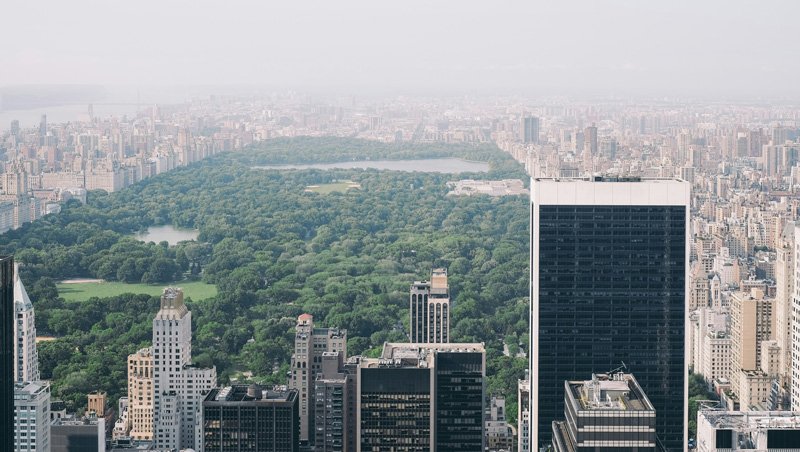
Let’s start the journey: North Meadow and North Woods
Central Park offers scenic views, naturalistic landscapes and sinuous paths that lead to extensive green areas, the largest of which is North Meadow with 12 sports fields and huge space for relaxing, picnicking and walking; not far away, in the north-western area, we find North Woods, the largest of the three wooded landscapes with an extension of approximately 16 hectares including a variety of landscapes, buildings and historical ruins such as the fortification built during 1812 war; the area was designed with the purpose of creating the appearance of wild nature in the heart of the city through the construction of waterfalls, rural bridges and paths where one can stop and admire the surrounding environment with its significant ecological value.
Conservatory Garden
Located on the east side, it was unveiled in 1937 with the name Conservatory Garden in reference to the glass greenhouse built in 1899 as an exhibition of seasonal plants. Today it represents the only formal garden in Central Park and one of the most significant public gardens in New York, rich in plant species such as chrysanthemums, lilacs, tulips, wild apple trees, cherry trees and herbaceous perennials whose profusions of colors, scents and textures envelop the visitor immersing in an atmosphere that stimulates the senses and distances him from the urban frenzy. Covering approximately 2.5 hectares, this garden is composed of three areas, each with a well-defined design: the French-style north garden, the Italian-style central garden and the English-style south garden. Crossing an imposing, finely decorated wrought iron gate, the Vanderbilt Gate, we reach the central garden created on the principles of Italian Renaissance gardens with a symmetrical design defined by a central lawn bordered by yew hedges and surrounded by avenues of wild apple trees which with their spring blooms create a unique scenographic effect. Behind the lawn we find a large semi-circular pergola covered by the sinuous branches of wisteria while in the center of the green area the central single jet fountain stands majestically, the focal point of the Italian garden with a unique design formal and geometric having a single column of water collected in a large basin outlining relevant perspective views. Moving to the northern part we will also be enchanted by the French-style garden with its conspicuous displays of tulips every spring and chrysanthemums in autumn, and at the center of which is the oval-shaped Untermyer Fountain surrounded by a refined parterre and with a bronze casting of the Three Dancing Maidens by Walter Schott who joyfully stretch out their arms to form a circle.
The third garden, located in the south, is structured in concentric flowerbeds in the English garden style with a wide range of bulbs, annuals, perennials and trees whose blooms give a continuous touch of color in the succession of each season of the year. The garden hosts the Burnett Fountain at the end of a water lily pool, built in memory of Frances Hodgson Burnett, author of books such as The Secret Garden, representing a lying boy playing the flute and a young girl who recall the main characters of the writer.
Hallet nature sanctuary
Located on a rocky hill south-east of Central Park, it represents a 1.6-hectare wooded landscape with winding paths, marked by native plants, which lead us to different panoramic points and areas to rest along the shore of a mirror of water in perfect harmony with the surrounding environment and where you can admire the foliage of Central Park in its bright shades of orange, yellow and red in autumn.
Heckscher Playground
Central Park is home to 21 playgrounds, the largest of which is Heckscher Playground, built in 1926 and renovated several times, today offering a wide range of structure of games for children such as swings and slides as well as a large open space and an area for water games, built on the site of the pre-existing children’s pool and composed of a series of raised walkways animated by spray sprinklers.
The large meadows: Great Lawn, Sheep Meadow and Cedar Hill
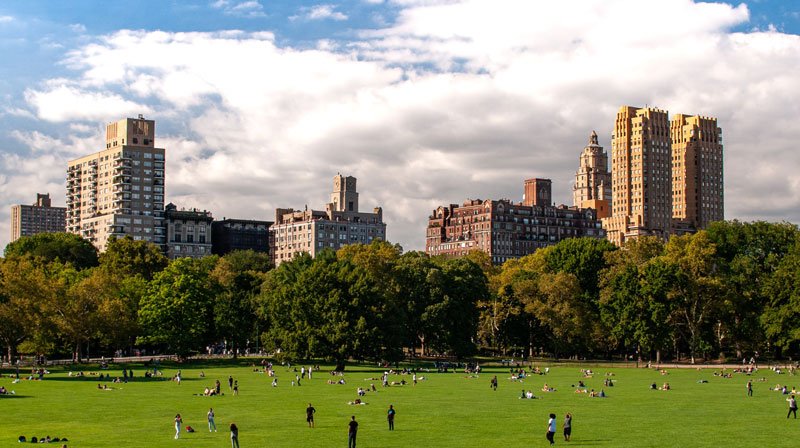
Located in the center of Central Park, Great Lawn represents one of the most famous lawns in the world, a 4.8 hectare oval area where you can relax, have a picnic, sunbathe, enjoy the view or play on the volleyball and basketball courts. Also known as a performance and concert space, it includes major scenic and scenic views such as Arthur Ross Pinetum and Turtle Pond. At the south end we find another large lawn, Sheep Meadow, which with an extension of 6 hectares represents one of the best-known open landscapes of Central Park, the maximum expression of an area designed as a refuge from urban life where you can be fascinated by the contrast between the green of the lawn and the sky of Manhattan. A place worth visiting is the sloping meadow of Cedar Hill dotted with rocky outcrops among which cedars and other trees, a favorite destination during snowy days as it is considered the best for having fun with sledding.
Shakespeare Garden
Located along a steep hill is the fascinating Shakespeare Garden, a 1.5 hectare space created on the principles of the English-style garden with trees, shrubs and flowers mentioned in the works of William Shakespeare; distributed throughout the garden we also discover numerous bronze plaques with citations of some plant species found in the writer’s literature. Inside the area we can stop on a semicircular granite bench called the “whispering bench” because you can hear a whisper uttered from one end to the other
Conservatory Water
Among the most loved destinations in Central Park, with a multitude of attractions designed for children such as the pond known as Model Boat Pond, where children and adults can race sailboats and miniature yachts rented in the nearby Boathouse. Along the regular edges of the reflective surface of the pond we find a series of benches where you can relax while drinking or eating something purchased in the bar adjacent to the area. Not far away we can admire two statues inspired by the world of fairy tales: Alice in Wonderland, one of the most famous sculptures in the park, and the monument in honor of Hans Christian Andersen, author of children’s books. Furthermore, during the winter, when the water freezes completely, the lake is also open for ice skating.
Balto’s statue
One of the most appreciated and loved monuments, especially by the little ones, is the memorial that stands on the top of a rocky spur in honor of the husky dog Balto who became famous after a heroic expedition of vaccines against diphtheria in 1925 through Alaska. The same four-legged hero attended the inauguration of the monument that glorifies him.
Strawberry Fields
Strawberry Fields, whose name derives from the Beatles song entitled “Strawberry Fields Forever”, represents the memorial dedicated to John Lennon, defined by a landscape of 2 hectares with many meeting spaces, lawns lined with trees and shrubs, a path immersed in a wooded area and a design element represented by the mosaic donated by Italy created on the ground and bearing the word Imagine in the center, a point where it is possible to pay homage to the British singer.
The Mall
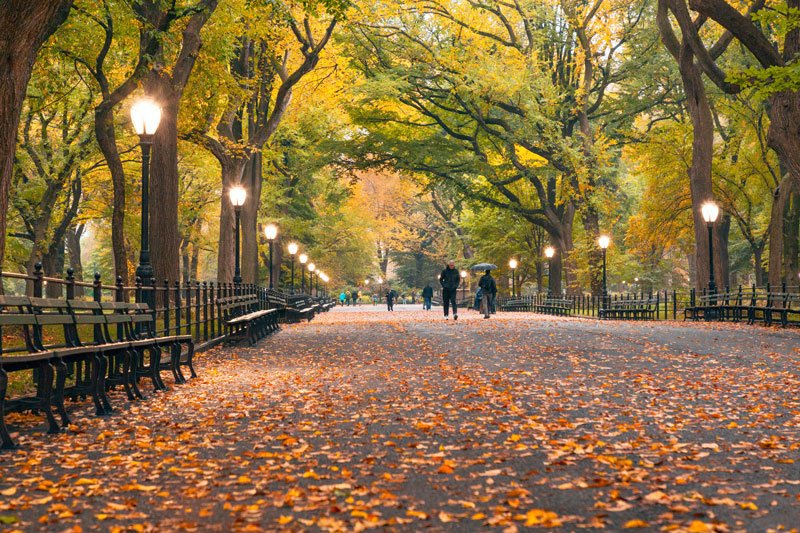
If you are inside Central Park, take the opportunity to walk along The Mall, a wide and straight path flanked by two regular rows of American elms which with their sinuous branches create a sort of architectural space similar to a cathedral; designed by Olmsted and Vaux as a formal promenade, an open-air reception hall as the designers themselves called it, today it represents a meeting area where you can admire majestic trees and monuments, stroll and relax. In the southern section, known as the Literary Walk in reference to the numerous sculptures of writers present, a new monument dedicated to the pioneers of women’s rights was placed in 2020, while the northern section includes the Concert Ground, where you can listen to classical and popular music.
Now all you need to do is to pack your luggage and book your trip to New York where you can admire Central Park, a pulsating landscape within the city, a social space and a quiet refuge where you can communicate with nature, an escape from urban routine.

